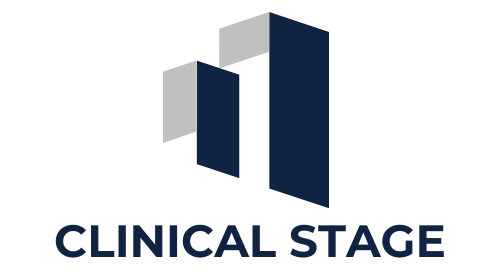Breakthrough Therapies in Clinical Trials
Breakthrough therapies represent a significant advancement in the realm of medical science, offering hope for treatments and cures for some of the most challenging and previously untreatable conditions. These therapies, often grounded in cutting-edge research and innovative approaches, have the potential to revolutionize patient care by providing more effective and targeted treatments.
The importance of breakthrough designations in clinical trials cannot be overstated. Regulatory bodies such as the U.S. Food and Drug Administration (FDA) and the European Medicines Agency (EMA) grant breakthrough therapy designations to expedite the development and review of drugs that show promising preliminary clinical evidence indicating substantial improvement over existing therapies. This designation not only accelerates the availability of new treatments but also brings life-changing therapies to patients who need them most.
The purpose of this blog is to highlight some of the most recent breakthrough therapies currently undergoing clinical trials. We will explore their mechanisms, the diseases they target, and their potential impact on patient care. By examining these innovations, we aim to provide a comprehensive understanding of how breakthrough therapies are shaping the future of medicine and improving outcomes for patients worldwide.
Understanding Breakthrough Therapy Designation
The breakthrough therapy designation is a critical component in the expedited development and review of new drugs that demonstrate substantial improvement over existing therapies for serious or life-threatening conditions. This designation is designed to facilitate and expedite the development and review processes, ensuring that promising therapies can reach patients as quickly as possible.
A breakthrough therapy designation is granted to a drug if preliminary clinical evidence indicates that it may offer substantial improvement over existing treatments for serious or life-threatening diseases. To qualify, the therapy must:
- Target a serious or life-threatening condition.
- Show preliminary clinical evidence of substantial improvement over available therapies.
- Address an unmet medical need.
The Role of Regulatory Bodies in Granting This Designation
Regulatory bodies, such as the U.S. Food and Drug Administration (FDA) and the European Medicines Agency (EMA), play a pivotal role in granting breakthrough therapy designations. These agencies evaluate the preliminary clinical data and determine whether a therapy meets the stringent criteria required for this designation. Their role includes:
- Evaluation of Evidence: Reviewing clinical trial data to assess the potential of the therapy.
- Ongoing Support: Providing guidance and support throughout the drug development process.
- Accelerated Review: Prioritizing the review of applications to expedite the approval process.
Benefits of Breakthrough Therapy Designation for Drug Development
The breakthrough therapy designation offers several benefits that significantly impact the drug development process:
- Accelerated Development and Review: Therapies with this designation benefit from more frequent interactions with regulatory agencies, which can streamline the development process and expedite the review timeline.
- Access to Priority Review: Drugs that receive breakthrough therapy designation are often eligible for priority review, further shortening the time to market.
- Collaborative Development: Regulatory bodies work closely with drug developers, providing guidance on clinical trial design and development strategies to optimize the path to approval.
- Potential for Early Approval: In some cases, therapies with breakthrough designation may be approved based on early clinical trial results, especially if they address urgent medical needs.
By understanding the breakthrough therapy designation, we can appreciate the significant role it plays in advancing medical innovations and improving patient care. This framework not only accelerates the development of life-saving treatments but also ensures that patients with serious conditions have faster access to groundbreaking therapies that can make a substantial difference in their lives.
Recent Breakthrough Therapies in Clinical Trials
A. Oncology
Innovative cancer treatments are at the forefront of breakthrough therapies, offering hope for better patient outcomes through advanced mechanisms and targeted approaches.
Example 1: CAR-T Cell Therapies
- Mechanism of Action: CAR-T cell therapies involve modifying a patient's T cells to express a Chimeric Antigen Receptor (CAR) that targets specific cancer cells. These engineered T cells are then infused back into the patient to attack and kill the cancer cells.
- Clinical Trial Results and Patient Outcomes: CAR-T cell therapies have shown remarkable success in clinical trials for certain types of blood cancers, such as acute lymphoblastic leukemia (ALL) and diffuse large B-cell lymphoma (DLBCL). Patients have experienced significant remission rates, with some achieving long-term remission.
Example 2: PARP Inhibitors
- Mechanism of Action: PARP inhibitors block the enzyme poly (ADP-ribose) polymerase (PARP), which helps repair DNA damage in cells. By inhibiting PARP, these drugs exploit the DNA repair weaknesses in cancer cells, leading to their death.
- Clinical Trial Results and Patient Outcomes: PARP inhibitors have been particularly effective in treating ovarian and breast cancers with BRCA mutations. Clinical trials have shown improved progression-free survival and overall response rates, offering a new lifeline for patients with these genetic markers.
B. Neurological Disorders
Breakthrough therapies for neurological disorders are making strides in addressing conditions that have long been challenging to treat.
Example 1: Gene Therapy for Spinal Muscular Atrophy (SMA)
- Mechanism of Action: Gene therapy for SMA involves delivering a functional copy of the SMN1 gene to patients via a viral vector. This therapy aims to restore the production of the survival motor neuron (SMN) protein, which is deficient in SMA patients.
- Clinical Trial Results and Patient Outcomes: Clinical trials have demonstrated significant improvements in motor function and survival rates in infants treated with gene therapy. This breakthrough has transformed the prognosis for SMA, offering hope for a previously fatal condition.
Example 2: Monoclonal Antibodies for Alzheimer’s Disease
- Mechanism of Action: Monoclonal antibodies targeting beta-amyloid plaques in the brain aim to reduce the buildup of these plaques, which are associated with Alzheimer’s disease progression.
- Clinical Trial Results and Patient Outcomes: Trials for drugs like aducanumab have shown promise in slowing cognitive decline in Alzheimer’s patients. While the results are mixed and controversial, these therapies represent a significant step toward effective treatments for this debilitating disease.
C. Infectious Diseases
The urgent need for effective treatments for infectious diseases has driven innovation in this field, especially in the context of global health crises.
Example 1: Antiviral Therapies for COVID-19
- Mechanism of Action: Antiviral therapies for COVID-19, such as remdesivir and monoclonal antibodies, work by inhibiting viral replication or neutralizing the virus.
- Clinical Trial Results and Patient Outcomes: Clinical trials have shown that these treatments can reduce the severity and duration of COVID-19 symptoms, lower hospitalization rates, and improve survival outcomes, especially in high-risk patients.
Example 2: Novel Antibiotics for Resistant Bacterial Infections
- Mechanism of Action: Novel antibiotics are designed to target resistant bacterial strains, overcoming the mechanisms that render traditional antibiotics ineffective.
- Clinical Trial Results and Patient Outcomes: New antibiotics like ceftazidime-avibactam have shown efficacy against multi-drug-resistant bacteria, providing essential tools in the fight against antibiotic resistance and offering better outcomes for patients with severe infections.
D. Rare Diseases
Rare and orphan diseases often lack effective treatments due to their low prevalence, but breakthrough therapies are beginning to change that landscape.
Example 1: Enzyme Replacement Therapies
- Mechanism of Action: Enzyme replacement therapies provide patients with a functional version of a deficient or missing enzyme, addressing the underlying cause of metabolic disorders.
- Clinical Trial Results and Patient Outcomes: Treatments for diseases like Gaucher disease and Fabry disease have shown significant improvements in symptoms and quality of life, marking a transformative advancement for these rare conditions.
Example 2: RNA-Targeted Therapies
- Mechanism of Action: RNA-targeted therapies, such as antisense oligonucleotides (ASOs) and small interfering RNAs (siRNAs), modulate gene expression to treat genetic disorders at the RNA level.
- Clinical Trial Results and Patient Outcomes: These therapies have shown promise in conditions like Duchenne muscular dystrophy and hereditary transthyretin amyloidosis, providing new hope for patients with limited treatment options.
By highlighting these recent breakthrough therapies, we can appreciate the profound impact they have on patient care, offering new treatment possibilities and improving outcomes across a range of serious and life-threatening conditions.
Potential Impact on Patient Care
Improved Treatment Outcomes and Survival Rates Breakthrough therapies have the potential to significantly enhance treatment outcomes and increase survival rates for patients with serious and life-threatening conditions. For instance, CAR-T cell therapies and PARP inhibitors in oncology have shown remarkable efficacy, leading to higher remission rates and extended survival for cancer patients. Similarly, gene therapies for neurological disorders like spinal muscular atrophy have dramatically improved motor functions and survival outcomes, offering new hope where none existed before.
Enhanced Quality of Life for Patients These innovative therapies not only aim to treat the disease but also improve the overall quality of life for patients. By targeting specific genetic mutations and providing more precise treatments, side effects are often reduced compared to traditional therapies. For example, targeted cancer therapies can minimize the toxicities associated with conventional chemotherapy, allowing patients to maintain a better quality of life during treatment.
Faster Access to Innovative Treatments Due to Regulatory Incentives Breakthrough therapy designation by regulatory bodies like the FDA provides several incentives that can expedite the development and review process of promising drugs. These include more frequent interactions with the FDA, rolling review, and priority review, which help bring these critical therapies to patients more quickly. This accelerated pathway ensures that patients have faster access to potentially life-saving treatments.
Long-Term Benefits and Potential Cures for Previously Untreatable Conditions One of the most profound impacts of breakthrough therapies is their potential to provide long-term benefits and even cures for diseases that were previously considered untreatable. Gene therapies and RNA-targeted treatments, for instance, offer the possibility of correcting genetic defects at their source, providing lasting benefits and potentially curing the disease. This not only transforms the lives of patients but also reduces the long-term healthcare burden associated with chronic management of these conditions.
By revolutionizing the approach to treatment, these breakthrough therapies represent a significant advancement in patient care, offering new hope and improved outcomes for countless individuals facing serious health challenges.
Challenges and Considerations
High Costs and Accessibility Issues One of the significant challenges associated with breakthrough therapies is their high cost. Advanced treatments like CAR-T cell therapy and gene therapy often come with hefty price tags, which can make them inaccessible to many patients, especially those without adequate insurance coverage.
The financial burden not only affects patients and their families but also puts pressure on healthcare systems. Efforts to address these cost issues include advocating for insurance coverage, exploring value-based pricing models, and seeking government and philanthropic support to subsidize treatments for those in need.
Managing Patient Expectations and Ethical Considerations The promise of breakthrough therapies can raise high expectations among patients and their families. It is crucial to manage these expectations realistically, providing clear information about the potential benefits, risks, and uncertainties associated with new treatments.
Additionally, ethical considerations must be addressed, particularly when it comes to gene editing and other cutting-edge technologies. Informed consent processes must be robust, ensuring that patients fully understand the experimental nature of these therapies and the potential long-term implications.
Ensuring Long-Term Safety and Efficacy While breakthrough therapies can offer significant short-term benefits, their long-term safety and efficacy remain uncertain in many cases. Continuous monitoring and follow-up studies are essential to gather data on long-term outcomes and potential late-onset side effects. This ongoing surveillance helps ensure that the benefits of the therapies continue to outweigh the risks and that any emerging safety concerns are promptly addressed.
Regulatory Hurdles and the Need for Ongoing Post-Market Surveillance Navigating the regulatory landscape for breakthrough therapies can be complex. While regulatory agencies like the FDA offer expedited pathways for promising treatments, these therapies must still meet stringent safety and efficacy standards. After approval, rigorous post-market surveillance is necessary to monitor the real-world performance of these therapies.
This includes tracking adverse events, assessing long-term effectiveness, and ensuring that the treatments are being used appropriately in clinical practice. Collaboration between regulatory bodies, healthcare providers, and pharmaceutical companies is essential to maintain the balance between rapid access and patient safety.
Breakthrough therapies represent a remarkable advancement in medical science, offering new hope and improved outcomes for patients with serious and life-threatening conditions. While these innovative treatments bring significant benefits, they also pose several challenges that must be addressed to ensure their successful implementation and equitable access. By managing costs, setting realistic expectations, ensuring long-term safety, and navigating regulatory hurdles, the healthcare community can maximize the potential of breakthrough therapies to transform patient care.
The development and adoption of breakthrough therapies require collective efforts from researchers, healthcare providers, policymakers, and patients. Continued investment in research, ethical vigilance, and collaboration across all sectors are crucial to overcoming the challenges and fully realizing the promise of these innovative treatments. Stay informed about the latest advancements in breakthrough therapies and support initiatives aimed at making these life-changing treatments accessible to all who need them.
Future Directions in Breakthrough Therapies
Emerging Trends and Technologies in Breakthrough Therapies The field of breakthrough therapies is rapidly evolving, driven by advancements in biotechnology, genomics, and precision medicine. Emerging trends include the development of next-generation gene editing technologies, such as CRISPR-Cas9 and base editing, which offer more precise and potentially safer methods for correcting genetic defects.
Additionally, the use of artificial intelligence (AI) and machine learning (ML) is becoming increasingly prevalent in drug discovery and development, helping to identify new therapeutic targets and predict patient responses to treatments more accurately.
Potential New Candidates for Breakthrough Therapy Designation Several promising candidates are on the horizon for breakthrough therapy designation. These include novel gene therapies for rare genetic disorders, innovative immunotherapies for various cancers, and advanced regenerative medicine approaches for conditions such as heart disease and spinal cord injuries. Therapies targeting previously untreatable neurological conditions, such as amyotrophic lateral sclerosis (ALS) and Huntington's disease, are also showing significant promise in early-stage clinical trials.
Collaborative Efforts in Research and Development The development of breakthrough therapies often requires extensive collaboration between academic institutions, pharmaceutical companies, regulatory agencies, and patient advocacy groups.
These partnerships are crucial for pooling resources, sharing knowledge, and accelerating the translation of scientific discoveries into clinical applications. Initiatives such as the Accelerating Medicines Partnership (AMP) and the Cancer Moonshot are examples of collaborative efforts that aim to advance the development of breakthrough therapies through coordinated research and data sharing.
The Evolving Landscape of Personalized Medicine and Its Synergy with Breakthrough Therapies The integration of personalized medicine with breakthrough therapies is revolutionizing the approach to patient care. Personalized medicine involves tailoring treatments based on an individual's genetic makeup, lifestyle, and environmental factors.
This synergy allows for more precise targeting of therapies, leading to improved efficacy and reduced side effects. As the understanding of the human genome and disease biology continues to grow, the potential for personalized breakthrough therapies will expand, offering more effective and individualized treatment options for patients.
Breakthrough therapies are at the forefront of medical innovation, offering unprecedented opportunities to improve patient outcomes and address unmet medical needs. By leveraging emerging technologies, fostering collaborative research, and integrating personalized medicine approaches, the healthcare community can continue to push the boundaries of what is possible in disease treatment and management. As the landscape of breakthrough therapies evolves, it is essential to remain committed to ethical practices, equitable access, and ongoing research to ensure these life-changing treatments benefit all patients who need them.
Recap of the Importance of Breakthrough Therapies in Clinical Trials
Breakthrough therapies represent a significant advancement in clinical trials and drug development. These innovative treatments have the potential to drastically improve patient outcomes by targeting the underlying causes of diseases more effectively than traditional therapies. By receiving breakthrough therapy designation, these treatments benefit from expedited development and review processes, ensuring that life-saving drugs reach patients more quickly.
Emphasis on the Transformative Potential for Patient Care:
The transformative potential of breakthrough therapies cannot be overstated. These therapies offer hope for patients with conditions that were previously considered untreatable or where existing treatments were insufficient. By focusing on specific genetic mutations and mechanisms of disease, breakthrough therapies can provide more effective and personalized care, resulting in better treatment outcomes, improved quality of life, and, in some cases, potential cures.
Encouragement for Continued Innovation and Investment in Breakthrough Research:
To sustain and expand the impact of breakthrough therapies, ongoing innovation and investment in research are crucial. Pharmaceutical companies, academic institutions, and government agencies must continue to prioritize and fund cutting-edge research that pushes the boundaries of medical science. Investors and stakeholders should recognize the immense potential of breakthrough therapies and support initiatives that foster their development. Collaborative efforts and shared resources will be key to overcoming the challenges and accelerating progress in this field.
The future of clinical trials and breakthrough therapies is incredibly promising. As technology advances and our understanding of disease mechanisms deepens, the potential for developing highly effective and targeted treatments will continue to grow. The integration of precision medicine, genomic research, and innovative clinical trial designs will revolutionize the way we approach healthcare, ultimately leading to better patient outcomes and a higher standard of care.
Breakthrough therapies are not just a glimpse into the future of medicine—they are actively shaping it. By embracing these advancements and maintaining a commitment to ethical, patient-centered research, we can ensure that the full potential of breakthrough therapies is realized, bringing hope and healing to countless patients worldwide.










